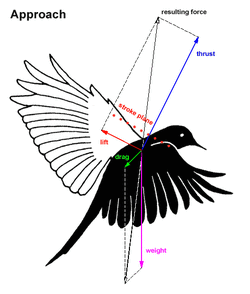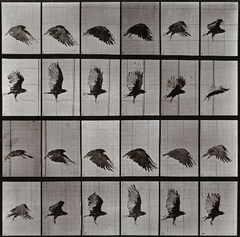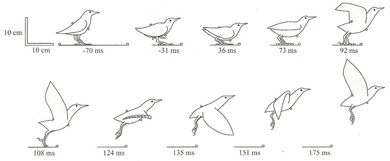
This is a webpage with lots of facts about bird flight including mainly wing shapes.
http://www.earthlife.net/birds/flight.html
http://www.earthlife.net/birds/flight.html
Edweard Muybridge
Examples of birds in flight is evident in the early work of Edwaerd Muybridge who took photogrphs of birds at different stages in the flight cycle. These could then be used to interpret into key frames for an animation and drawn studies.
Don Bluth Drawing Birds in Flight
Here is a video of Don Bluth drawing out the different key frames of a brid in flight and explaining certain aspects, which will be very useful when studying birds and getting round to doin a simialr exercise myself.
"How to make birds fly good...
"Here is another webpage explaining, in depth, the details of a bird in flight including the actual movement of the wings during flight, like how it rotates, and how the bone structure creates certain movements.
http://www.brendanbody.co.uk/flight_tutorial/index.html
http://www.brendanbody.co.uk/flight_tutorial/index.html

This is an interesting comparison of the bone stucture of the arm of a human and the wing of a bird, and the similar bones that they have. This could help in understanding why and how the way a wing would move, being able to compare it to an arm.

There is also a lot of inforamtion on the taking off as well as videos which will be very useful when analysing movements in more depth.

This is a diagram from the book 'The Animator's Survival Kit' by Richard Williams, explaing the "technique for making stiff, straight limbs look fluid" .
Bird Flight
Here is a lonk for a great website which has a lot of source material on bird flight including, photos, diagrams and videos of many different kinds of birds and in flight movements.
http://www.youtube.com/watch?v=6UlsArvbTeo&feature=player_embedded
http://www.youtube.com/watch?v=6UlsArvbTeo&feature=player_embedded
How Ornithopers Fly

This is another good website on flight cycles, but this one goes into much more depth about the physics and why things happen during flight.
http://www.ornithopter.de/english/principle.htm
The image to the right shows where the different forces, acting on a bird in flight, are located on the actual body of the bird.
The following is a section of text that I have copied from the site which explains several different aspects i should be aware of when analysing a bird's flight...
http://www.ornithopter.de/english/principle.htm
The image to the right shows where the different forces, acting on a bird in flight, are located on the actual body of the bird.
The following is a section of text that I have copied from the site which explains several different aspects i should be aware of when analysing a bird's flight...
The basic moving components of a bird wing in addition to the forward motion
are:Flapping motion at the shoulder joint. In cruising
flight the axis lies almost parallel to the axis of fuselage. Stroke
angle, flapping frequency and time flow are within wide limits.Pulling or dragging of the outboard wing section during
upstroke by the inboard wing section. Depending on the bird species and the
flight situation this motion is pronounced very differently.
Inclination of the stroke plane. It is determined by the
inclination of the stroke axis. Birds have the possibility to lift the stroke
axis at the front in comparison to the fuselage and additionally, the axis of
the fuselage in comparison to the flight direction.Twisting of the wing. It increases towards the wing tip
- mostly during upstroke in the direction of a positive and during downstroke
in the direction of a negative angle of incidence.Turning of the wing root, especially when flying with
thrust and mostly in direction of the wing twisting. Such a thing is rarely
visible among big birds in cruising flight.Sweep, especially of the outboard wing section during
upstroke with the backward motion of the wing tip. In general, multiple
sweepings are applied within a half span at the same time. Especially small
birds use them. They fold up the wing during upstroke partially or
completely.



